Depaving for a greener future: When it makes sense and the best practices.

In an increasingly urbanised world, concrete and asphalt cover much of our landscapes. While these surfaces are necessary for roads, parking lots, and infrastructure, they often come at the expense of natural environments.
Depaving or re-greening, the process of removing concrete, asphalt or other impermeable ground coverings to restore natural ground, is gaining popularity as a way to counteract the negative environmental impacts of over-paving.
I engaged in my first depaving project more than 20 years ago when I restored my garden from a solid concrete slab. It was very successful and has restored the ecological diversity of my plot of land.
Below: Before my first depaving project from 1998. Concrete slabs over stone flags.
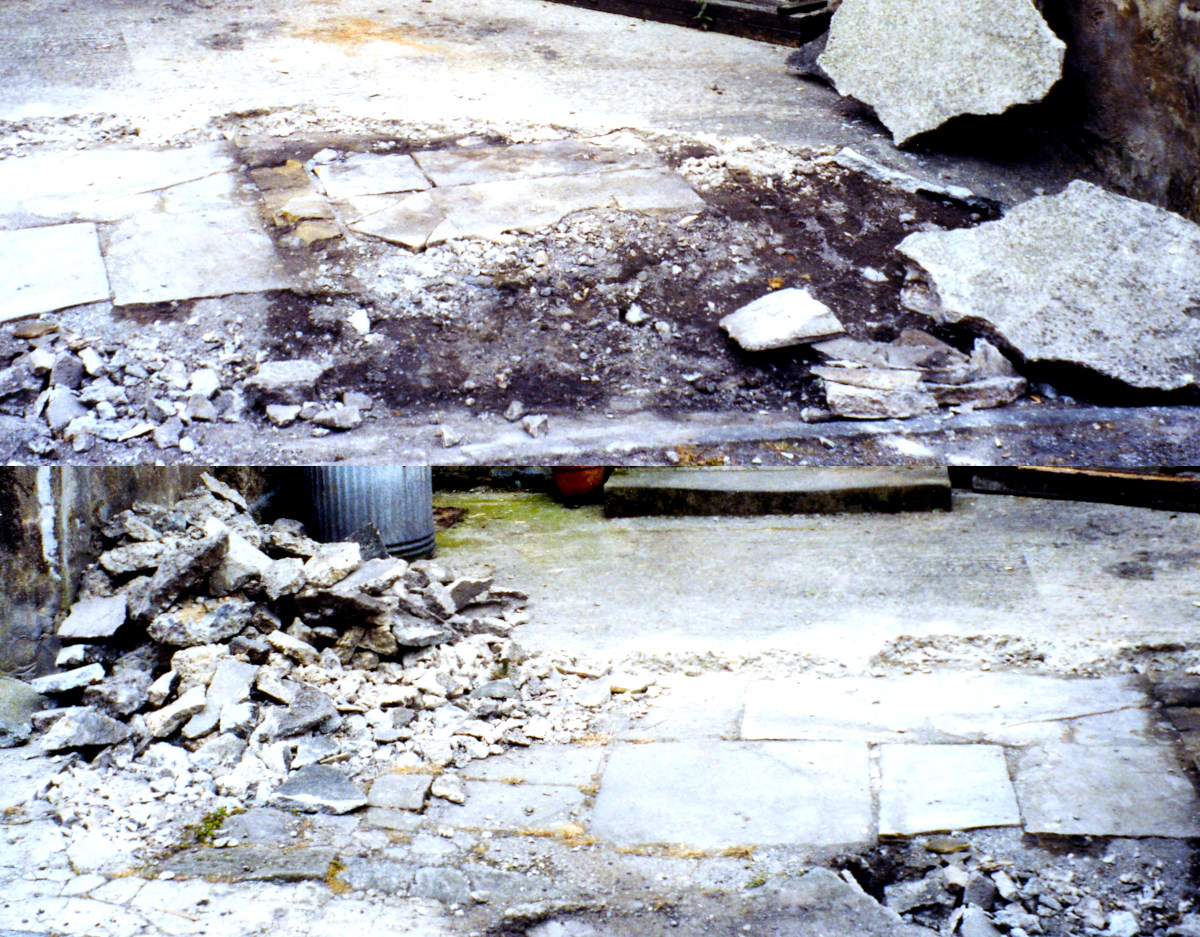
Depaving can offer significant environmental and community benefits, but it's important to consider the specific context before making a decision. Evaluate the potential impacts on structural integrity, accessibility, and usage patterns to determine whether restoring natural ground covering is the right choice for your project.
Below: After my first depaving project. Wood chip on the floor and stone flags with no mortar between for a path.
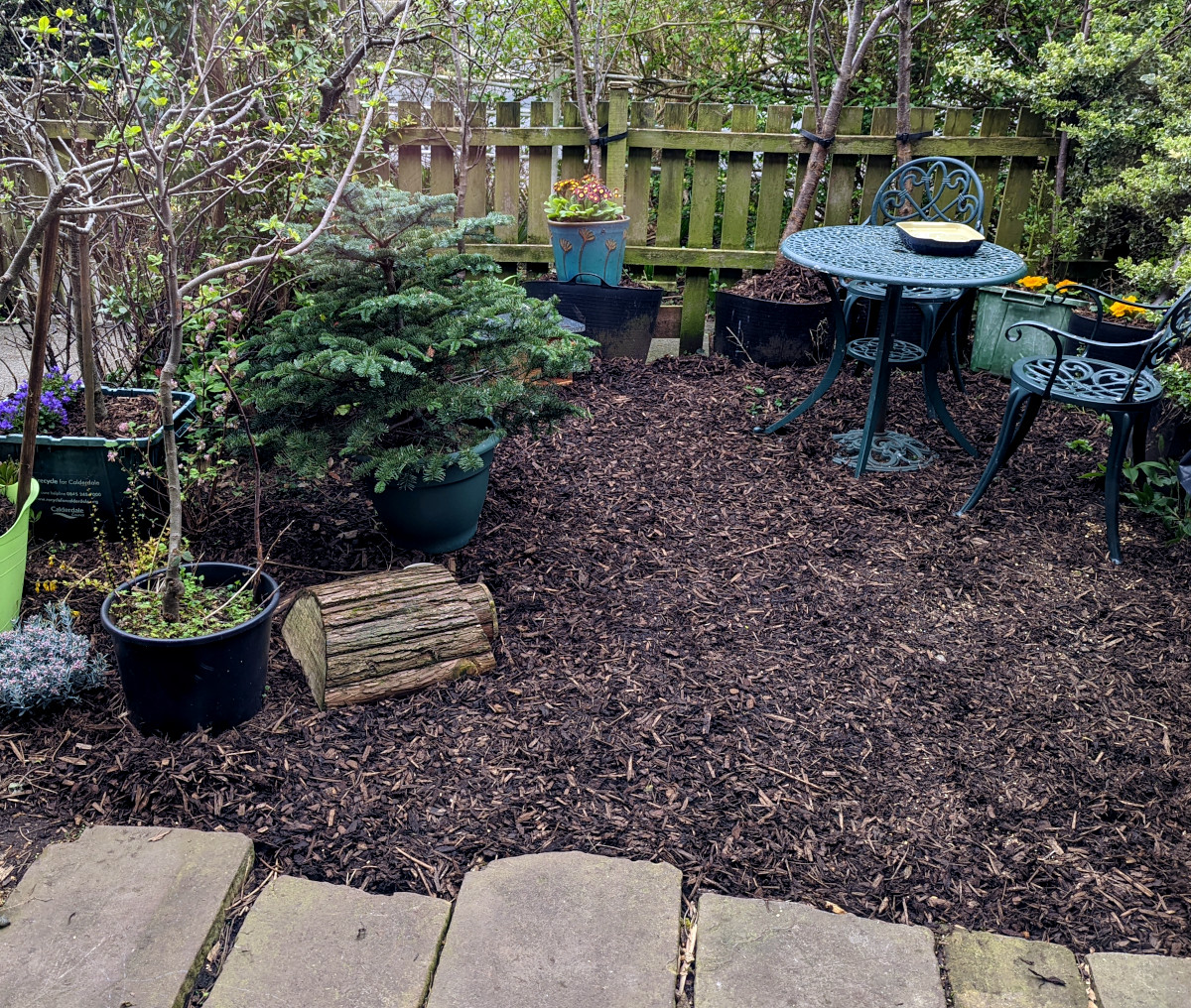
When done thoughtfully, depaving can be a powerful tool in creating more sustainable and liveable spaces.
Consider some alternatives:
It is perfectly possible to have engineering structures that are completely natural and have proper drainage.
Below: An example of a car park and steps built using natural permeable materials.
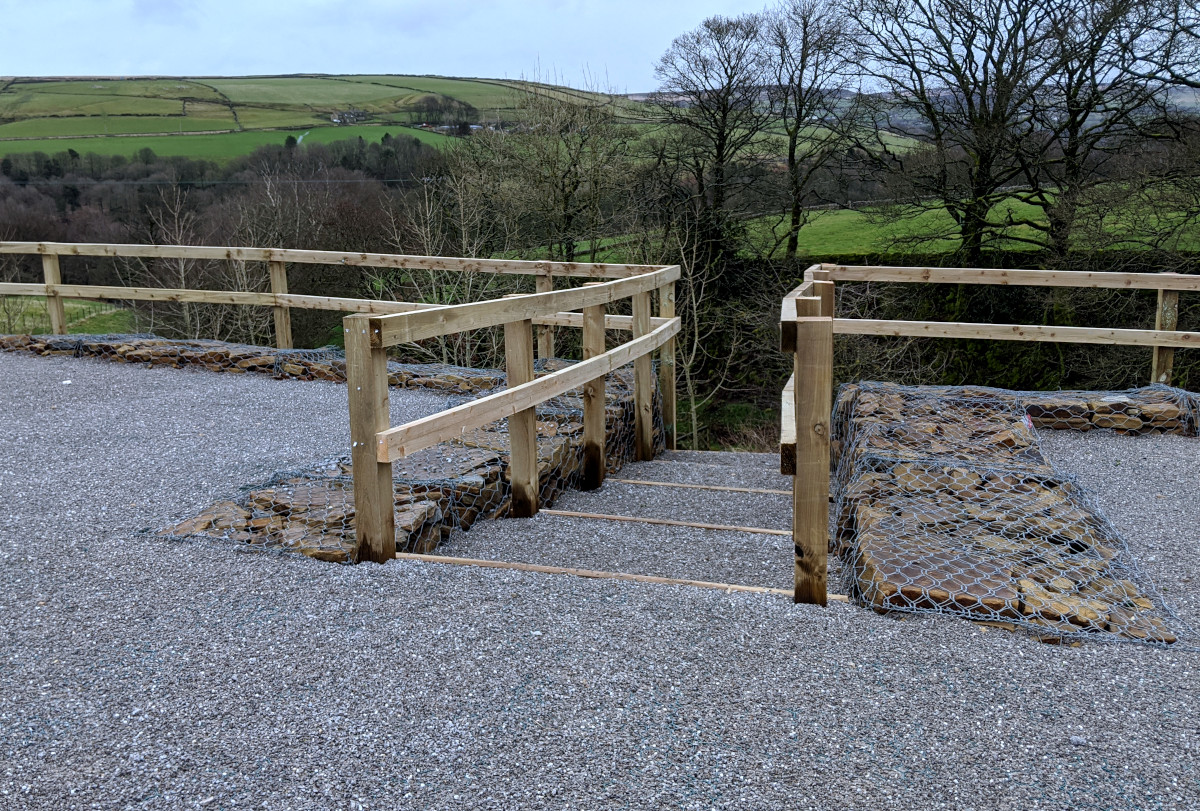
Other sustainable alternatives to traditional paving include porous paths and concrete, bark, wood-chip, grass, gravel or even plants like clover or chamomile.
When to Depave:
Green spaces can easily be 10 or more degrees C cooler than paved open areas and can help mitigate the heat island effect so often found in towns and cities.
Restoring the soil that has been compacted under solid surfaces may take a few years.
Drainage Issues: If your property experiences frequent flooding or water pooling, depaving can help improve drainage by allowing rainwater to infiltrate the soil naturally.
Foundation Damage: Excessive or stormwater water runoff can lead to foundation problems. Depaving and replacing the surface with permeable materials can help mitigate this risk.
Environmental Concerns: Traditional paved surfaces can contribute to storm-water runoff pollution. Depaving and replacing them with permeable materials can help reduce environmental impact.
Below: It is not always necessary to completely remove hard impermeable surfaces to get the benefit. In this example I removed the pointing or mortar from between the flags.
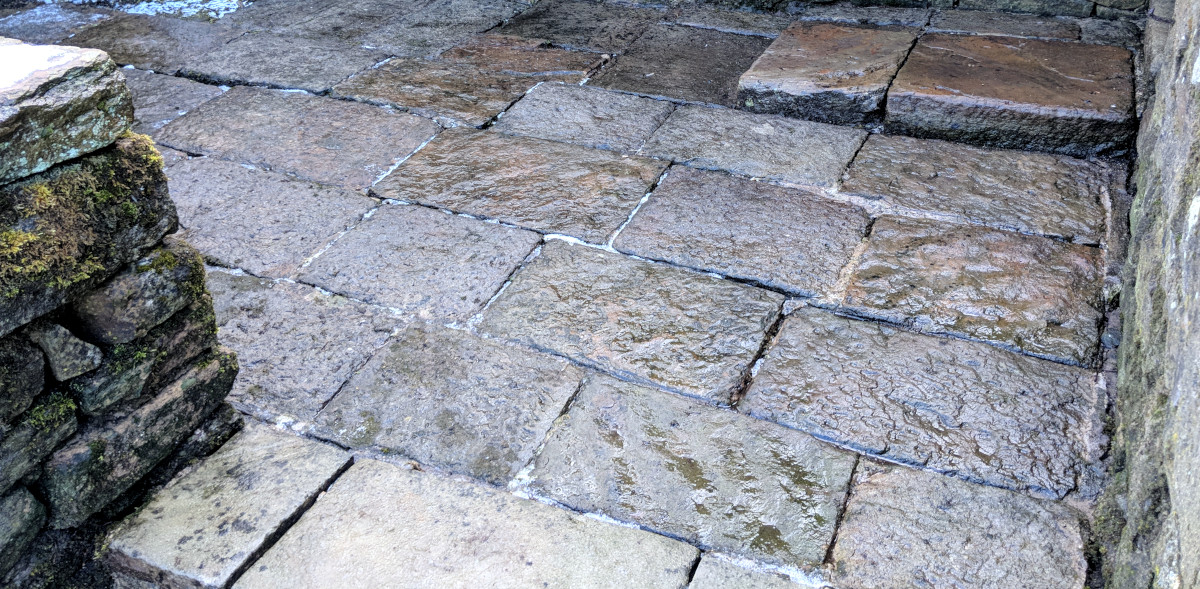
Water now drains between the stone flags.
Removing impervious surfaces can reduce storm-water runoff, decrease the heat island effect, and promote biodiversity by creating space for plants, trees, and wildlife.
Aesthetics: Depaving and replacing the surface with natural materials like grass or gravel can enhance the overall appearance of your property.
Financial Benefits: If you’re looking to enhance your property’s ecological health, depaving is a great option that can increase value.
Community Spaces: Depaving can be particularly effective in urban areas where communities seek to create parks, community or food gardens, or other public green spaces. Transforming unused or underused paved areas into vibrant communal environments can foster social connections and improve local quality of life.
When to Avoid Depaving:
Municipal governments and urban planners may have to give their consent for works and not all city councils or neighbourhood residents groups will be in favour of changes to their environment.
Structural Concerns: In some cases, paved surfaces provide necessary structural support. Removing them could compromise the stability of buildings, roads, or other infrastructure.
Below: Partial depaving - It may be enough to have soakaways to deal with water run off. Here a gap has been left along the wall and filled with plants and stones to allow water to soak into the ground.
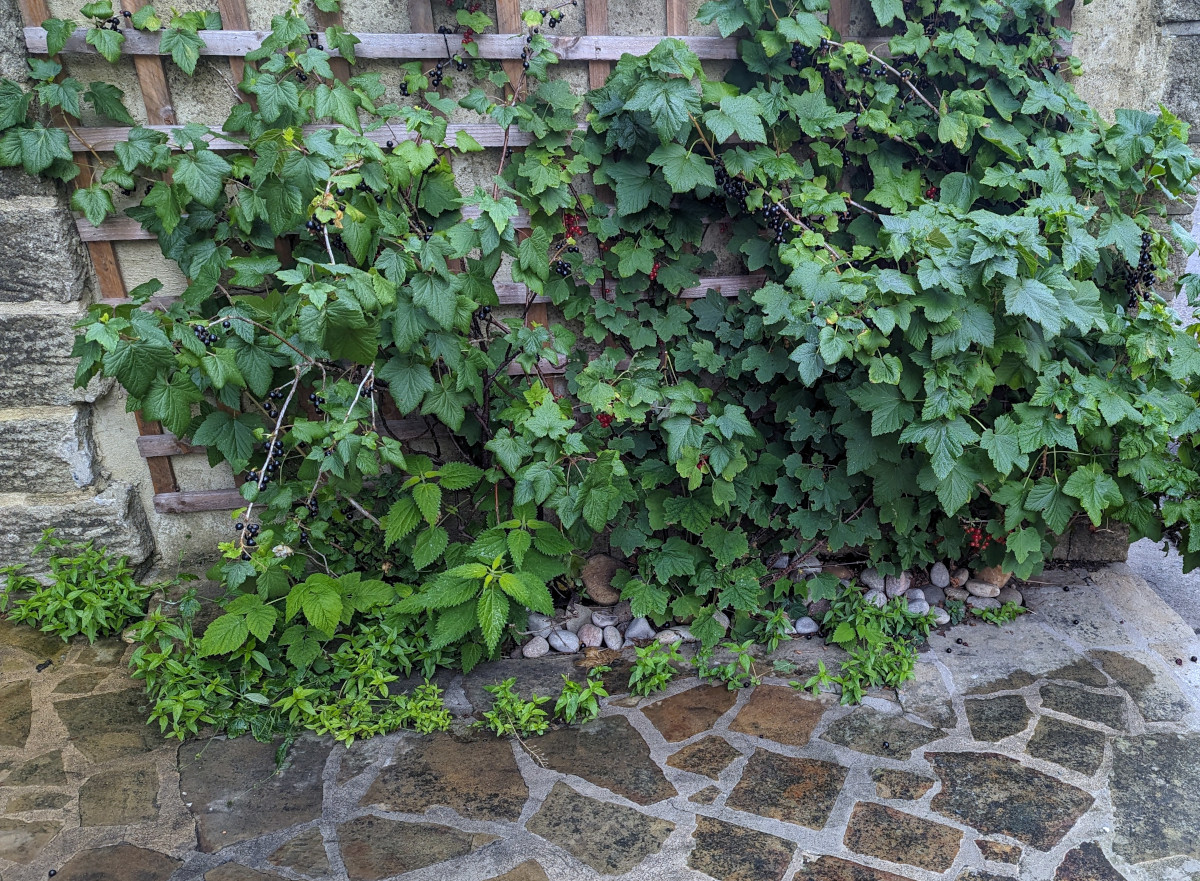
If the area you’re considering depaving serves a critical structural purpose, it may be better to look for alternative solutions, such as using permeable paving materials.
Accessibility Needs: Paved surfaces are often essential for accessibility. For example, driveways, walkways, and parking areas need to be smooth and stable for individuals with mobility challenges.
Depaving in these areas could create accessibility issues, so it’s important to balance environmental goals with practical considerations.
High-Traffic Areas: In areas with heavy foot or vehicle traffic, depaving might lead to wear and erosion, making it difficult to maintain a usable surface.
In such cases, maintaining the pavement or considering a compromise, such as permeable pavement, might be a more suitable option.
Limited Space and budget constraints: Depaving can create additional green spaces, but if you have limited property size, the benefits may not outweigh the costs.
Removing concrete or asphalt and restoring natural ground can be a costly undertaking, especially if you plan to replace the surface with expensive materials.
Factors to consider for your depaving project:
It is important to consider that there will be an environmental impact to any project, the concrete or asphalt you remove will need to be disposed of and the there are local and national laws governing what can be done with it.
- What type of depaving are you going for: There is selective, partial and full depth removal.
- What materials are you going to replace the paving with: Gravel, grass, food garden or completely wild areas.
- Decide on the process: Are you going to do it yourself, by hand or use machines and contractors.
- Will it require permits or permissions: Will the city councils or municipality going to want to have their say over your project.
- What will it cost: And is there a benefit to that cost. the money might be better spent elsewhere.
Depaving can happen quickly or more naturally over time. In my case i removed all the hard surfaces completely and landscaped with all new plants and trees in one go but some may prefer mother nature to restore the ecological balance in her own time.
